#Nanking
Explore tagged Tumblr posts
Text



















Эстетика котов и цветущей глицинии. Aesthetics of cats and blooming wisteria.
Источник://t.me/+J0mNQWlg-Iw4NzIy, //vk.com/cute.ness, //es.pinterest.com/pin/283797214013419344/, /www.thepaper.cn / newsDetail_forward_22003636, //m.weibo.cn/detail/ 48955351504 00186, //www.npadata.cn/sf_ 49BA26D0508A4B 94913DED78B49 B586D_306_C63C17B3622.html.
#China#Nanking#cityscape#roofs#tiles#nature#flora#flowers photography#flowers#wisteria#flower aesthetics#bloomcore#animals#cats#Китай#Нанкин#городскойпейзаж#природа#флора#цветы#глициния#животные#коты#крыши#черепица
251 notes
·
View notes
Text
The way Germany and Japan are treated these days when it comes to their pasts in WW2 is so interesting.
Just thinking because today germany has someone ask the poles today for forgiveness for what they did in the Warsaw uprising.
But recently Japan throws fits about comfort women statue's.
Hitler and the Nazis are always gonna be associated with Germany as much as beer and cars but Japan rebrands into the cute cartoon and video game 'living in 2050' country.
Both seem to have rising nationalist movements again but where doesn't these days
#maybe it's because all the media focuses more on the European front so Germany idk#you don't hear as much about the death marches#nanking#unit 731#etc
20 notes
·
View notes
Text

Nanking Road by night in Shanghai, China
British vintage postcard
#historic#photography#postal#ansichtskarte#road#night#photo#sepia#shanghai#vintage#postcard#nanking#briefkaart#british#nanking road#china#postkarte#tarjeta#carte postale#ephemera#postkaart
15 notes
·
View notes
Photo

Nanking cherries have a long history of use in food, medicine, and ornamental gardening. They’re a member of the rose family of plants and the same genus as cherries, plums, and apricots. These cold-hardy shrubs produce small, white to pink flowers in the spring. In the summer, dark red edible stone fruits (drupes) appear en masse. They stay on bushes until late in the season, making them some of the earliest and latest fruits you’ll harvest. If you live in the coldest regions of the U.S. and have trouble growing fruit, this remarkably resilient shrub will be a great choice. Let’s dive in to learn how to plant and care for nanking cherry bushes in your area. Nanking Cherry Bush Overview Plant Type Deciduous Shrub Native Area Northeast Asia Watering Requirements Moderate Pests & Diseases Branch cankers, aphids, spider mites, coryneum blight, borers Soil Type Loamy, well-drained soil with a pH between 5.0 to 7.5 What Is It? This hardy fruit tree thrives in cold, harsh climates. In the frigid gardens of Siberia, Mongolia, Tibet, and northern China, few species of fruit trees can survive. Nanking cherries, however, thrive in these frigid zones. This is where some of the planet’s driest and coldest air masses move east. For fruit trees to come from here, they have to be resilient. The first trees arrived in the U.S. in 1882. The horticulture writers of the Yearbook of Agriculture 1937 praised their future in US agriculture. Because of their small and sweet drupes, farmers were interested in their potential as a major fruit crop. Today, few farmers grow nanking cherries, and even fewer market their fruit. The drupes have a short shelf life once they’re harvested. Still, for gardeners who grow them, they’re an exciting fruit that makes incredible jams, pies, juices, and wines. Characteristics Hardy shrubs produce vibrant flowers and edible red drupes. Nanking cherry bushes (Prunus tomentosa) are deciduous shrubs and members of the rose family. They’re part of the Prunus genus which includes popular stone fruits such as cherries, plums, and almonds. They go by several names, including Manchu cherry, mountain cherry, and Mongolian cherry. They’re one of the toughest stone fruits you can grow. They’ll handle droughts, severe cold, wind, and rain with ease. These striking bushes grow to 10 feet high. They produce an abundance of white to pink flowers in the spring, followed by dense green foliage and edible red drupes. The flowers attract beneficial pollinators such as hummingbirds and bees. They make gorgeous alternatives to Yoshino cherry trees for enjoying a ‘hanami’ party at home. Native Area Originating in cold plains, these shrubs thrive in harsh climates. These stunning shrubs originated in the cold plains of northeast Asia. In these semi-arid regions, long winters plunge temperatures below 0°F (-18°C) for months. Nanking cherries adapted to this cold, dry climate by developing a long taproot and downy fuzz on their foliage. People spread them to Japan, Russia, and Korea. They became popular in gardens across the region because of their edible fruit and ornamental flowers. Today, they are grown throughout northern Asia, Russia, Northern Europe, and Canada. Planting Growing from seed or container starters yields fruitful shrubs. These shrubs grow easily from seed. Many gardeners harvest their seeds from the drupes by washing, drying them, and cold-stratifying them for over 100 days. They can grow in large containers, 100-gallon BPA-free grow bags, or directly sown into the ground. You can plant them in the spring after cold stratification or in the fall. Fall-sown seeds will naturally stratify and germinate in the spring. Nanking cherries need cross-pollination to produce fruit. You should plant two within 100 feet of one another for proper fruit set. They’re somewhat hard to find in the US. Some suppliers and nurseries sell bare root plants as well as seeds. Occasionally, you may find starters in containers. Transplanting Ensure two shrubs for fruit production and optimal growth. These shrubs can handle transplanting well. If you’re not in zones 2 through 7, these bushes will have trouble surviving. They can’t handle long periods of hot temperatures and high humidity. Make sure you have two or more shrubs to produce fruit. Find a site with a neutral soil pH and over 6 to 8 hours of direct sunlight. Besides these basic requirements, these flowering shrubs don’t need special care. Transplant them in fall, late winter, or early spring before they start producing foliage. Grow them near other stone fruits if you want to cross-pollinate between species. Growing from Seed Store-bought cold-stratified seeds can be planted in early spring. Order seeds from a reputable source online or at a nursery. Check that they aren’t damaged or chipped. Look at their packing date and avoid planting seeds over a year old. Seeds will need cold stratification to germinate. After harvesting, clean them well and dry them for a few days in a cold, dry spot. Afterward, cold-stratify them outside in the cold or in your refrigerator for 100 days. Keep them in a mixture of vermiculite, sand, and potting mix. Plant your seeds directly into the soil in the fall to cold stratify them. Store-bought seeds that have already gone through cold stratification can go into the ground in early spring. Plant them to a depth of ¾ inches and space them out more than 15 feet if you’re growing them for flowers and fruit. If you’re growing them as hedges, plant them closer together, between 1 to 2 feet. How to Grow Nanking cherries are incredibly easy to grow. Once they germinate, they’re simple to maintain and don’t require much in terms of pruning or fertilization. They have long taproots that let them survive long periods of droughts. The only thing they can’t handle is heat. High temperatures and humidity will stress them over time. Ideally, they need to grow in zones 7 or under. This limits them to high-altitude zones and northern latitudes in the US. Light Ensure 6-8 hours of sunlight for healthy, sweet fruit. Grow these flowering shrubs in areas with over 6 to 8 hours of direct sunlight. They can grow in partial shade but won’t be as productive. Plants growing in full sun will put on plenty of growth and abundant flowers in spring. The more light they get the fuller their blooms. Plants grown in full sun will produce sweeter fruit with high concentrations of sugars and tannins. Water Ensure good drainage to prevent root rot and overwatering. As seedlings and young plants, give them plenty of water without over-saturating their soil. As they grow, they’ll develop their long taproot. Once they mature, they can survive long periods of droughts. Be careful not to overwater your shrubs. They are susceptible to root rot and are not suited to overly moist soils. In desert climates that receive less than 10 inches of rain a year, you may have to water them occasionally. Otherwise, you won’t have to worry about watering mature trees. Soil Amend soil to maintain good drainage and proper pH. These hardy shrubs prefer well-drained, loamy soil with a neutral pH of between 5.0 and 7.5. Use a soil testing kit to see if your soil is within this range. Some soil amendments will raise or lower the soil’s pH if needed. Nanking cherries will adapt to most soil types as long as they drain well. Soggy soils with high amounts of water-retaining clay and organic material are not ideal. Temperature and Humidity They’re best for cold climates and not suited for intense heat. These shrubs are some of the most cold-hardy plants you can grow. They’ll survive in areas with a USDA hardiness zone of 2. These regions include much of Alaska and northern Canada. Temperatures for zone 2 zones can reach below -50°F (-46°C) during the winter. Mature shrubs can handle a little humidity and short periods of afternoon heat. However, long and intense heat will eventually kill them. Gardeners in Florida, Hawaii, California, and the coastal South will not be able to grow them. They’ll thrive in the Great Planes, in places such as the Dakotas, Wyoming, and Utah. You can also grow them in New England and the Midwest as long as the soil is well-draining. Generally, the lower the humidity, the better. Fertilizing Organic compost can give young plants a helpful boost. These plants are experts at surviving in poor soils. They generally perform better away from nutrient-dense soil. Consider feeding young plants with organic compost in spring. Although this isn’t needed, it may help boost the plants’ energy before flowering. Maintenance They thrive with little care, just avoid soggy soil. One of the best things about growing Nanking cherries is their adaptability and low maintenance behavior. Once they’re established, you won’t have to worry about their needs. Monitor their soil for oversaturation. If you see them growing in soggy soil, you may have to relocate them to better-draining locations. While these aren’t invasive plants, they naturalize easily in the landscape. This may require regular thinning to prevent their spread. Propagation It’s easy to propagate these plants by seed and cuttings. They can handle a lot of stress. If you live near other trees, try growing your own trees by collecting seeds or taking cuttings. Cuttings Select flexible stems and root them in sun-filled spots. Find soft and flexible stems from several trees. Because they need cross pollination to flower and fruit, choose cuttings from as many individuals as possible. Select the stems in spring or fall and cut them at 45° angles about 12 inches from the tip. Make sure there are at least four leaf nodes. Take off the leaves near the bottom of the cuttings and dip the cut ends in a rooting hormone. Plant your cuttings up to 2 inches deep in loamy potting soil. Water them well and repeat when the soil gets dry. Place your cuttings in an area that gets plenty of direct sun. Within a couple of months, you’ll be able to plant them outside or in a larger container. Harvesting and Storage Pick at peak ripeness for a delicious, sweet flavor. After your plants bloom in spring, the pollinated flowers will turn into small drupes. They’ll ripen over summer, turning soft and bright to dark red. Once they’re ripe, harvest them immediately or leave them on the tree to develop even more delicious sugars. You’ll have to eat them within a few days or preserve them in jams or in the freezer. Nanking cherries taste similar to tart cherries. The longer you leave them on their branches, the sweeter they’ll be. Besides jams, pies, and juices, they make outstanding wine. You’ll need a lot of cherries, and you’ll have better success if you let them ripen until fall. Common Problems Other than sensitivity to long, hot temperatures and high humidity, these plants are tough as nails. They have very few issues growing in most regions of the northern US. If you have a healthy ecosystem full of natural predators like birds, spiders, and wasps, your trees will likely be pest-free. As always, keep an eye on your plants for diseases, especially after periods of heavy rain and humidity. Pests These hardy shrubs are relatively pest-free. However, they can still be infested by common pests that infest stone fruits. Western Cherry Fruit Fly Inspect fruit for pests and discard any infected ones. This common pest will its eggs in the ripening fruit. You’ll notice white maggots developing inside the fruit. Check your harvest for infestations and throw away infected fruit. You can treat your tree with spinosad if you’ve had issues with these flies before. Spray every week as soon as cherries start to ripen, and do so out of direct sunlight while pollinators are not active. Black Cherry Aphid Use neem oil after rinsing plants with water. Black cherry aphids will sometimes infest the plants’ leaves. You may notice sooty mold growing on the honeydew secretions. Treat large infections with organic neem oil after spraying them with a high-pressure water hose. Again, apply pesticides outside the high activity periods of pollinators and beneficial insects. Spider Mite Treat them with insecticidal soap until they disappear. Spider mites are small insects that feed on the inside of leaves. You’ll notice the very thin webs between leaves and plant tissue in severe infestations. If the infestations are high, try treating them with insecticidal soap once a week until they go away. Shothole Borer These pests of the Prunus genus bore under bark to lay their eggs. The shothole borer is a pest of plants in the Prunus genus and bores into the layers of wood below the bark. Adults then lay eggs in the cambium, causing girdling and eventually death if their numbers are high enough or the tree is weak enough. Prevent their spread by pruning away old and diseased branches, removing garden debris at the end of the season, and monitoring your tree for infestations. There is no pesticide that effectively controls the borer. Diseases Prune infected leaves and dispose of them immediately. Nanking cherries are usually disease free. Monitor your palnts for signs of root rot that can infect the roots of plants growing in soggy soil. There’s no cure for root rot. The only way to prevent it is by growing your shrubs in well-draining soil away from previously infected areas. Coryneum blight is a disease that may infect the leaves. You’ll notice small black or brown spots that eventually turn into large holes. Prune infected plant tissue and dispose of it immediately by burning it. If the infection is severe, try treating it with copper sprays at leaf drop. Frequently Asked Questions Yes, but only at high elevations in the north. Nanking cherries prefer growing in zone 7 and under. These areas include the northeastern corner of the state near the Modoc National Forest and the High Sierras. They taste like tart cherries, with large pits. They’re quite juicy and soft when they’re ripe. Yes, but only in big ones. These shrubs can grow to 10 feet but will stay between 4 and 6 feet tall. They have a long taproot, so your pot has to be deep. There are dwarf varieties that are much more compact. Source link
3 notes
·
View notes
Photo

Nanking cherries have a long history of use in food, medicine, and ornamental gardening. They’re a member of the rose family of plants and the same genus as cherries, plums, and apricots. These cold-hardy shrubs produce small, white to pink flowers in the spring. In the summer, dark red edible stone fruits (drupes) appear en masse. They stay on bushes until late in the season, making them some of the earliest and latest fruits you’ll harvest. If you live in the coldest regions of the U.S. and have trouble growing fruit, this remarkably resilient shrub will be a great choice. Let’s dive in to learn how to plant and care for nanking cherry bushes in your area. Nanking Cherry Bush Overview Plant Type Deciduous Shrub Native Area Northeast Asia Watering Requirements Moderate Pests & Diseases Branch cankers, aphids, spider mites, coryneum blight, borers Soil Type Loamy, well-drained soil with a pH between 5.0 to 7.5 What Is It? This hardy fruit tree thrives in cold, harsh climates. In the frigid gardens of Siberia, Mongolia, Tibet, and northern China, few species of fruit trees can survive. Nanking cherries, however, thrive in these frigid zones. This is where some of the planet’s driest and coldest air masses move east. For fruit trees to come from here, they have to be resilient. The first trees arrived in the U.S. in 1882. The horticulture writers of the Yearbook of Agriculture 1937 praised their future in US agriculture. Because of their small and sweet drupes, farmers were interested in their potential as a major fruit crop. Today, few farmers grow nanking cherries, and even fewer market their fruit. The drupes have a short shelf life once they’re harvested. Still, for gardeners who grow them, they’re an exciting fruit that makes incredible jams, pies, juices, and wines. Characteristics Hardy shrubs produce vibrant flowers and edible red drupes. Nanking cherry bushes (Prunus tomentosa) are deciduous shrubs and members of the rose family. They’re part of the Prunus genus which includes popular stone fruits such as cherries, plums, and almonds. They go by several names, including Manchu cherry, mountain cherry, and Mongolian cherry. They’re one of the toughest stone fruits you can grow. They’ll handle droughts, severe cold, wind, and rain with ease. These striking bushes grow to 10 feet high. They produce an abundance of white to pink flowers in the spring, followed by dense green foliage and edible red drupes. The flowers attract beneficial pollinators such as hummingbirds and bees. They make gorgeous alternatives to Yoshino cherry trees for enjoying a ‘hanami’ party at home. Native Area Originating in cold plains, these shrubs thrive in harsh climates. These stunning shrubs originated in the cold plains of northeast Asia. In these semi-arid regions, long winters plunge temperatures below 0°F (-18°C) for months. Nanking cherries adapted to this cold, dry climate by developing a long taproot and downy fuzz on their foliage. People spread them to Japan, Russia, and Korea. They became popular in gardens across the region because of their edible fruit and ornamental flowers. Today, they are grown throughout northern Asia, Russia, Northern Europe, and Canada. Planting Growing from seed or container starters yields fruitful shrubs. These shrubs grow easily from seed. Many gardeners harvest their seeds from the drupes by washing, drying them, and cold-stratifying them for over 100 days. They can grow in large containers, 100-gallon BPA-free grow bags, or directly sown into the ground. You can plant them in the spring after cold stratification or in the fall. Fall-sown seeds will naturally stratify and germinate in the spring. Nanking cherries need cross-pollination to produce fruit. You should plant two within 100 feet of one another for proper fruit set. They’re somewhat hard to find in the US. Some suppliers and nurseries sell bare root plants as well as seeds. Occasionally, you may find starters in containers. Transplanting Ensure two shrubs for fruit production and optimal growth. These shrubs can handle transplanting well. If you’re not in zones 2 through 7, these bushes will have trouble surviving. They can’t handle long periods of hot temperatures and high humidity. Make sure you have two or more shrubs to produce fruit. Find a site with a neutral soil pH and over 6 to 8 hours of direct sunlight. Besides these basic requirements, these flowering shrubs don’t need special care. Transplant them in fall, late winter, or early spring before they start producing foliage. Grow them near other stone fruits if you want to cross-pollinate between species. Growing from Seed Store-bought cold-stratified seeds can be planted in early spring. Order seeds from a reputable source online or at a nursery. Check that they aren’t damaged or chipped. Look at their packing date and avoid planting seeds over a year old. Seeds will need cold stratification to germinate. After harvesting, clean them well and dry them for a few days in a cold, dry spot. Afterward, cold-stratify them outside in the cold or in your refrigerator for 100 days. Keep them in a mixture of vermiculite, sand, and potting mix. Plant your seeds directly into the soil in the fall to cold stratify them. Store-bought seeds that have already gone through cold stratification can go into the ground in early spring. Plant them to a depth of ¾ inches and space them out more than 15 feet if you’re growing them for flowers and fruit. If you’re growing them as hedges, plant them closer together, between 1 to 2 feet. How to Grow Nanking cherries are incredibly easy to grow. Once they germinate, they’re simple to maintain and don’t require much in terms of pruning or fertilization. They have long taproots that let them survive long periods of droughts. The only thing they can’t handle is heat. High temperatures and humidity will stress them over time. Ideally, they need to grow in zones 7 or under. This limits them to high-altitude zones and northern latitudes in the US. Light Ensure 6-8 hours of sunlight for healthy, sweet fruit. Grow these flowering shrubs in areas with over 6 to 8 hours of direct sunlight. They can grow in partial shade but won’t be as productive. Plants growing in full sun will put on plenty of growth and abundant flowers in spring. The more light they get the fuller their blooms. Plants grown in full sun will produce sweeter fruit with high concentrations of sugars and tannins. Water Ensure good drainage to prevent root rot and overwatering. As seedlings and young plants, give them plenty of water without over-saturating their soil. As they grow, they’ll develop their long taproot. Once they mature, they can survive long periods of droughts. Be careful not to overwater your shrubs. They are susceptible to root rot and are not suited to overly moist soils. In desert climates that receive less than 10 inches of rain a year, you may have to water them occasionally. Otherwise, you won’t have to worry about watering mature trees. Soil Amend soil to maintain good drainage and proper pH. These hardy shrubs prefer well-drained, loamy soil with a neutral pH of between 5.0 and 7.5. Use a soil testing kit to see if your soil is within this range. Some soil amendments will raise or lower the soil’s pH if needed. Nanking cherries will adapt to most soil types as long as they drain well. Soggy soils with high amounts of water-retaining clay and organic material are not ideal. Temperature and Humidity They’re best for cold climates and not suited for intense heat. These shrubs are some of the most cold-hardy plants you can grow. They’ll survive in areas with a USDA hardiness zone of 2. These regions include much of Alaska and northern Canada. Temperatures for zone 2 zones can reach below -50°F (-46°C) during the winter. Mature shrubs can handle a little humidity and short periods of afternoon heat. However, long and intense heat will eventually kill them. Gardeners in Florida, Hawaii, California, and the coastal South will not be able to grow them. They’ll thrive in the Great Planes, in places such as the Dakotas, Wyoming, and Utah. You can also grow them in New England and the Midwest as long as the soil is well-draining. Generally, the lower the humidity, the better. Fertilizing Organic compost can give young plants a helpful boost. These plants are experts at surviving in poor soils. They generally perform better away from nutrient-dense soil. Consider feeding young plants with organic compost in spring. Although this isn’t needed, it may help boost the plants’ energy before flowering. Maintenance They thrive with little care, just avoid soggy soil. One of the best things about growing Nanking cherries is their adaptability and low maintenance behavior. Once they’re established, you won’t have to worry about their needs. Monitor their soil for oversaturation. If you see them growing in soggy soil, you may have to relocate them to better-draining locations. While these aren’t invasive plants, they naturalize easily in the landscape. This may require regular thinning to prevent their spread. Propagation It’s easy to propagate these plants by seed and cuttings. They can handle a lot of stress. If you live near other trees, try growing your own trees by collecting seeds or taking cuttings. Cuttings Select flexible stems and root them in sun-filled spots. Find soft and flexible stems from several trees. Because they need cross pollination to flower and fruit, choose cuttings from as many individuals as possible. Select the stems in spring or fall and cut them at 45° angles about 12 inches from the tip. Make sure there are at least four leaf nodes. Take off the leaves near the bottom of the cuttings and dip the cut ends in a rooting hormone. Plant your cuttings up to 2 inches deep in loamy potting soil. Water them well and repeat when the soil gets dry. Place your cuttings in an area that gets plenty of direct sun. Within a couple of months, you’ll be able to plant them outside or in a larger container. Harvesting and Storage Pick at peak ripeness for a delicious, sweet flavor. After your plants bloom in spring, the pollinated flowers will turn into small drupes. They’ll ripen over summer, turning soft and bright to dark red. Once they’re ripe, harvest them immediately or leave them on the tree to develop even more delicious sugars. You’ll have to eat them within a few days or preserve them in jams or in the freezer. Nanking cherries taste similar to tart cherries. The longer you leave them on their branches, the sweeter they’ll be. Besides jams, pies, and juices, they make outstanding wine. You’ll need a lot of cherries, and you’ll have better success if you let them ripen until fall. Common Problems Other than sensitivity to long, hot temperatures and high humidity, these plants are tough as nails. They have very few issues growing in most regions of the northern US. If you have a healthy ecosystem full of natural predators like birds, spiders, and wasps, your trees will likely be pest-free. As always, keep an eye on your plants for diseases, especially after periods of heavy rain and humidity. Pests These hardy shrubs are relatively pest-free. However, they can still be infested by common pests that infest stone fruits. Western Cherry Fruit Fly Inspect fruit for pests and discard any infected ones. This common pest will its eggs in the ripening fruit. You’ll notice white maggots developing inside the fruit. Check your harvest for infestations and throw away infected fruit. You can treat your tree with spinosad if you’ve had issues with these flies before. Spray every week as soon as cherries start to ripen, and do so out of direct sunlight while pollinators are not active. Black Cherry Aphid Use neem oil after rinsing plants with water. Black cherry aphids will sometimes infest the plants’ leaves. You may notice sooty mold growing on the honeydew secretions. Treat large infections with organic neem oil after spraying them with a high-pressure water hose. Again, apply pesticides outside the high activity periods of pollinators and beneficial insects. Spider Mite Treat them with insecticidal soap until they disappear. Spider mites are small insects that feed on the inside of leaves. You’ll notice the very thin webs between leaves and plant tissue in severe infestations. If the infestations are high, try treating them with insecticidal soap once a week until they go away. Shothole Borer These pests of the Prunus genus bore under bark to lay their eggs. The shothole borer is a pest of plants in the Prunus genus and bores into the layers of wood below the bark. Adults then lay eggs in the cambium, causing girdling and eventually death if their numbers are high enough or the tree is weak enough. Prevent their spread by pruning away old and diseased branches, removing garden debris at the end of the season, and monitoring your tree for infestations. There is no pesticide that effectively controls the borer. Diseases Prune infected leaves and dispose of them immediately. Nanking cherries are usually disease free. Monitor your palnts for signs of root rot that can infect the roots of plants growing in soggy soil. There’s no cure for root rot. The only way to prevent it is by growing your shrubs in well-draining soil away from previously infected areas. Coryneum blight is a disease that may infect the leaves. You’ll notice small black or brown spots that eventually turn into large holes. Prune infected plant tissue and dispose of it immediately by burning it. If the infection is severe, try treating it with copper sprays at leaf drop. Frequently Asked Questions Yes, but only at high elevations in the north. Nanking cherries prefer growing in zone 7 and under. These areas include the northeastern corner of the state near the Modoc National Forest and the High Sierras. They taste like tart cherries, with large pits. They’re quite juicy and soft when they’re ripe. Yes, but only in big ones. These shrubs can grow to 10 feet but will stay between 4 and 6 feet tall. They have a long taproot, so your pot has to be deep. There are dwarf varieties that are much more compact. Source link
2 notes
·
View notes
Text

IF I COULD HOLD LIGHT
nankin ink and photoshop
SE EU PUDESSE SEGURAR LUZ
tinta nankin e photoshop
4 notes
·
View notes
Text
Going through my grandads stuff from when he served in the navy during WW2 and finding out he was in Nanking at some point??? Also found a next of kin card for, supposedly, someone he served with who died and literally no one in the family knows who this dude is

Is there anyone who knows alot about this kinda stuff who can help me out? I've got so many pictures but I have no idea where they were taken. Hes also got a notebook where he took down hourly battlefield updates?? Dudes handwriting is rough though im even struggling to make out the next of kin card fully
#ww2 history#wwii history#nanking#navy#ww2 navy#war history#he has a fuckin free mason builders guild membership card too lmao
4 notes
·
View notes
Text
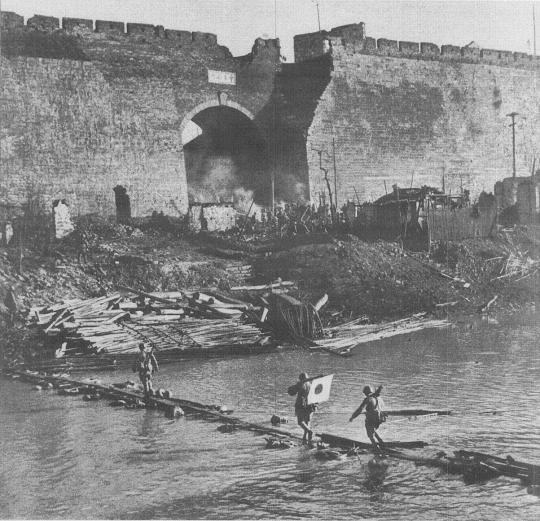
Des soldats japonais traversent les douves de Nankin pour entrer dans la ville par la porte Zhonghua – Bataille de Nankin – Guerre sino-japonaise – 13 décembre 1937
#WWII#guerre sino-japonaise#sino-japanese war#seconde guerre sino-japonaise#second sino-japanese war#bataille de nankin#battle of nanking#battle of nanjing#porte zhonghua#zhonghua gate#nankin#nanking#nanjing#chine#china#13/12/1937#12/1937#1937
5 notes
·
View notes
Text
Isolationism: How Well Did this Work Out for You Last Time?
The beginning of Japanese aggression that contributed to the onset of World War II can be traced back to its expansionist policies in the early 1930s. This period marks a significant escalation in Japan’s military ambitions, deeply rooted in its desire for resource acquisition and regional dominance. The roots of this aggression can be traced to the Manchurian Incident of 1931, an event that…
#appeasement#global order#global powers#Great Depression#international community#intervention#invasion of China#isolationism#Japanese militarism#Manchurian Incident#military ambitions#Nanking#Neutrality Acts#Pacific aggression#Pearl Harbor#puppet state#regional dominance#resource acquisition#Southeast Asia#US neutrality#Western powers#World War I
1 note
·
View note
Text
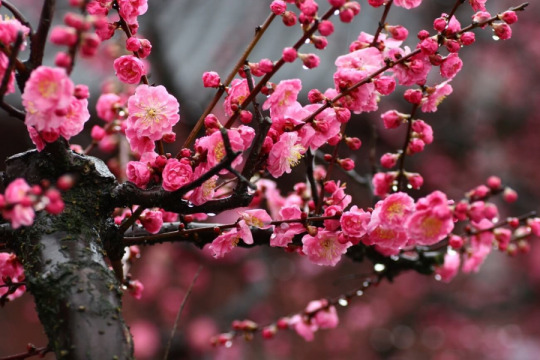
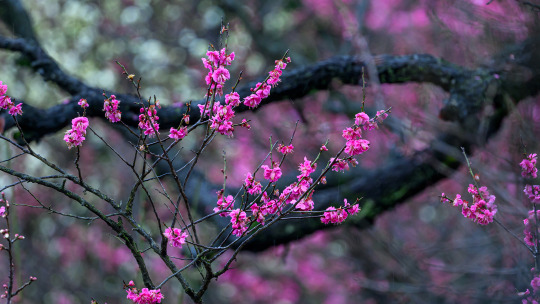

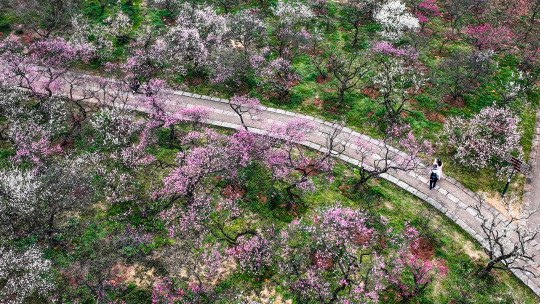
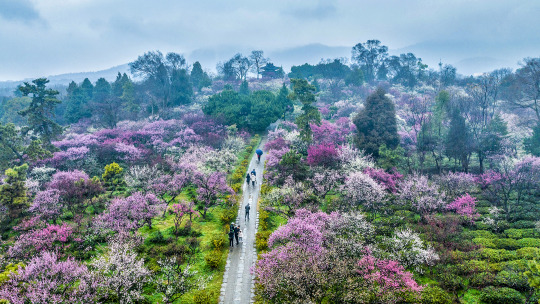
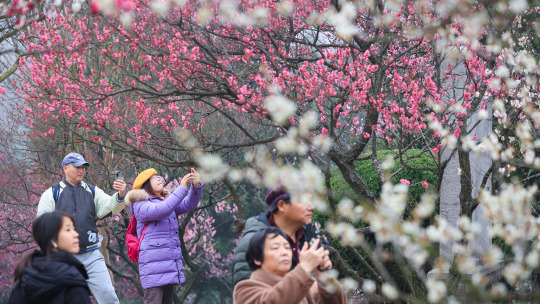
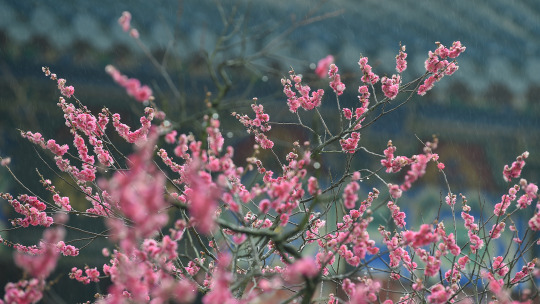
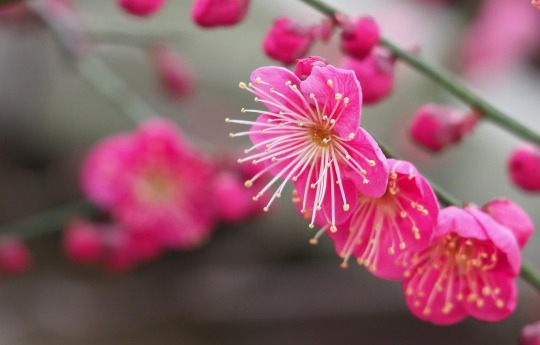
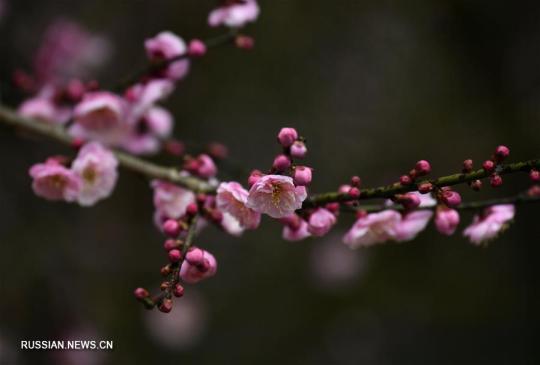
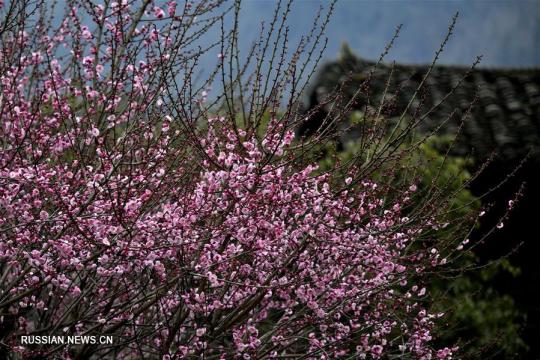
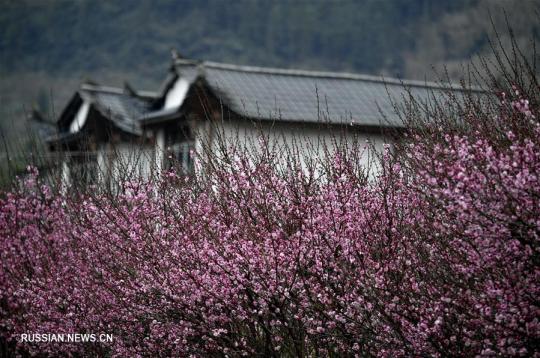

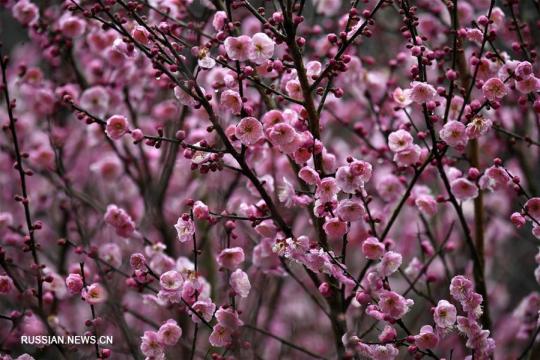
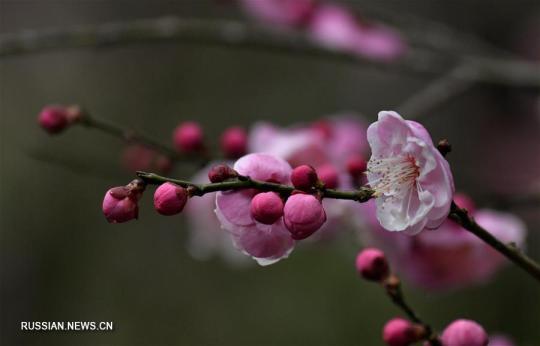
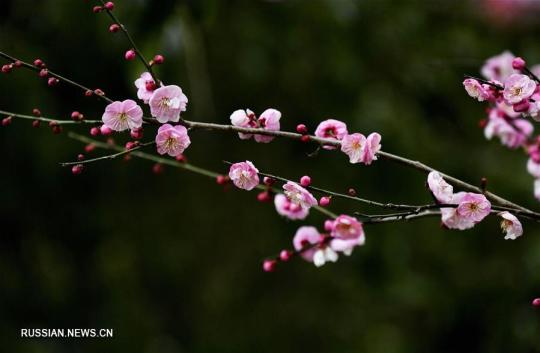
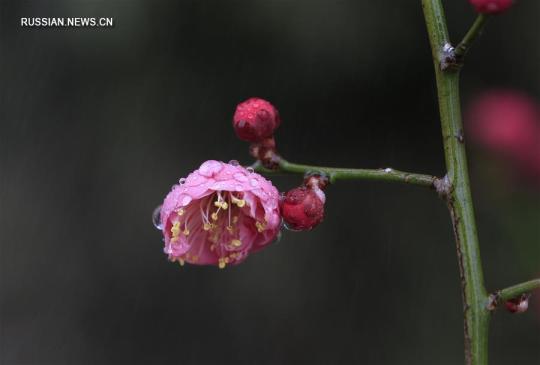
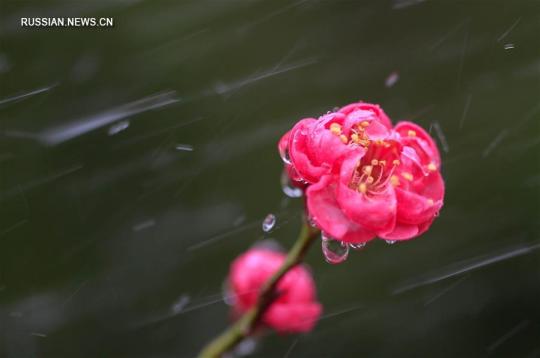

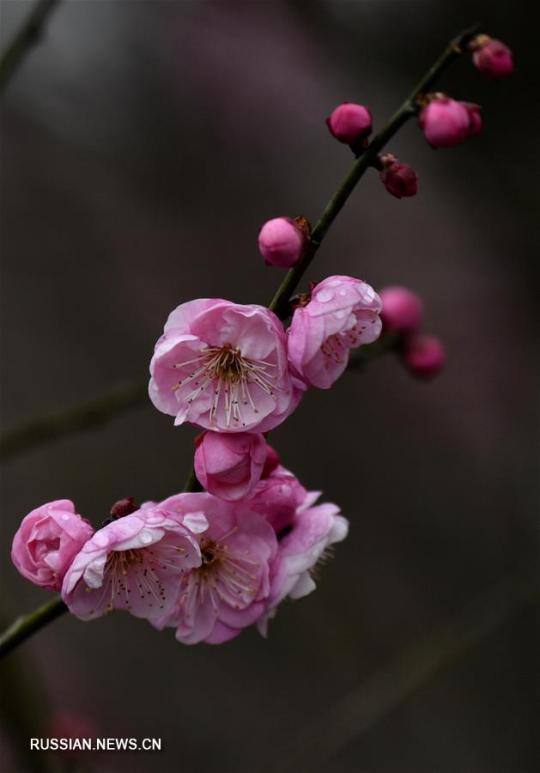

Вот так цветёт дикая китайская слива - Мэйхуа. Мэйхуа - самый главный поэтический символ в Китае. Слива входит и в "4 благородных", и в "три друга зимы". Её цветение приходится на конец зимы-начало весны. В Китае слива мэйхуа была вестником весны, нередко её цветение совпадало с празднованием китайского Нового года — Праздника весны 春节 чунь-цзе, который отмечается в конце января-начале февраля по лунному календарю.
Родиной мэйхуа считается район реки Янцзы, откуда она широко распространилась по всей Восточной Азии, включая Японию, Корею, Тайвань, Вьетнам. Произрастает на каменистых склонах гор на высоте от 300 до 2500 метров над уровнем моря. Мэйхуа зацветает раньше других цветов и выдерживает морозы до -50°. Нежные цветы нередко покрывает снег, создавая удивительный контраст. Цветы сливы отличаются разнообразием: есть белые, розовые, красные.
В эпоху Тан (618-907) в китайской живописи появляется отдельное направление — живопись мэйхуа, которое окончательно оформилось в эпоху Сун (960-1279).
This is how the wild Chinese plum, Meihua, blooms. Meihua is the most important poetic symbol in China. Plum is included in both the "4 noble ones" and the "three friends of winter". Its flowering occurs at the end of winter-the beginning of spring. In China, the Meihua plum was the herald of spring, often its flowering coincided with the celebration of the Chinese New Year — the Spring Festival 春节 Chun-tse, which is celebrated in late January-early February according to the lunar calendar.
The birthplace of Meihua is considered to be the Yangtze River region, from where it has spread widely throughout East Asia, including Japan, Korea, Taiwan, and Vietnam. It grows on rocky mountain slopes at an altitude of 300 to 2500 meters above sea level. Meihua blooms earlier than other flowers and withstands frosts up to -50 °. Delicate flowers are often covered with snow, creating an amazing contrast. Plum flowers are diverse: there are white, pink, red.
In the Tang era (618-907), a separate direction appeared in Chinese painting — Meihua painting, which finally took shape in the Song era (960-1279).
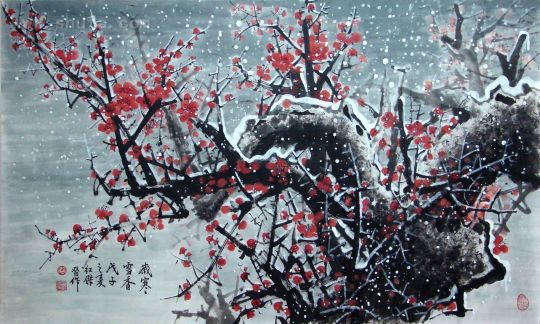
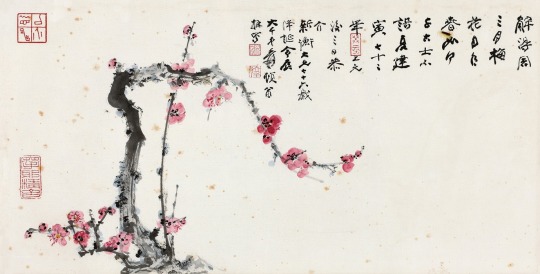

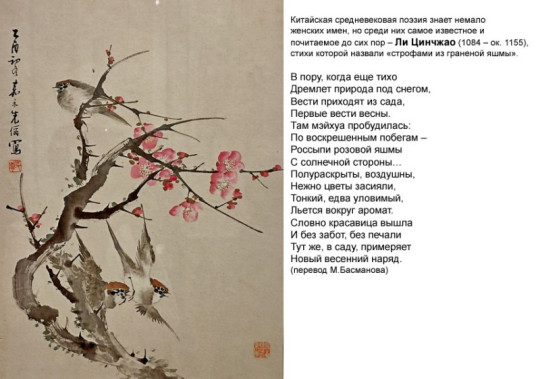
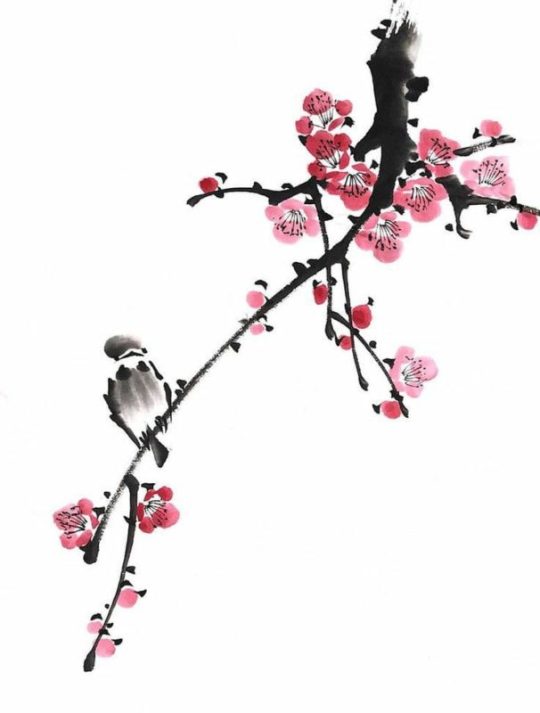
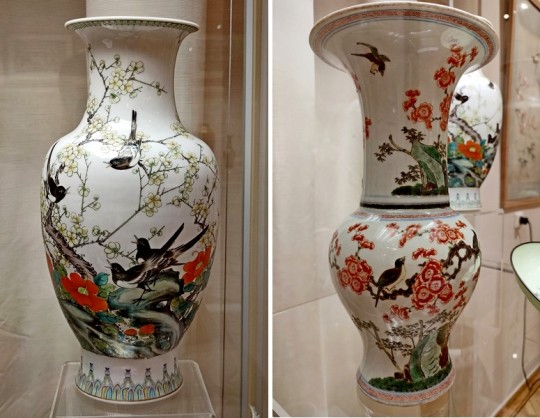
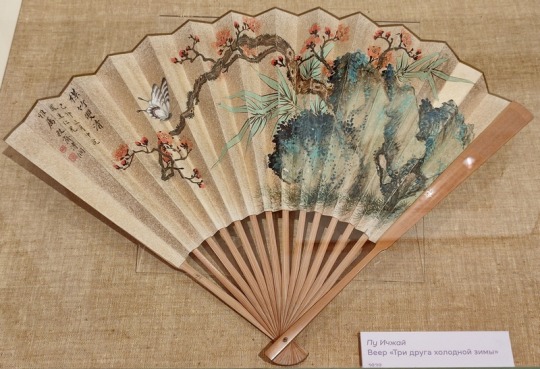
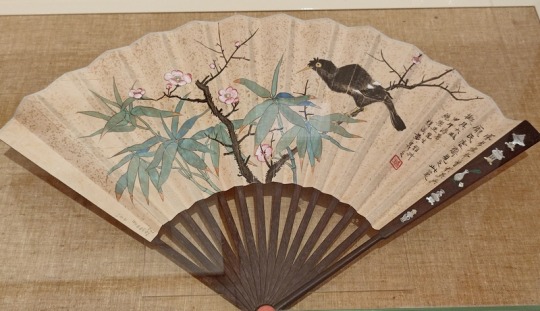
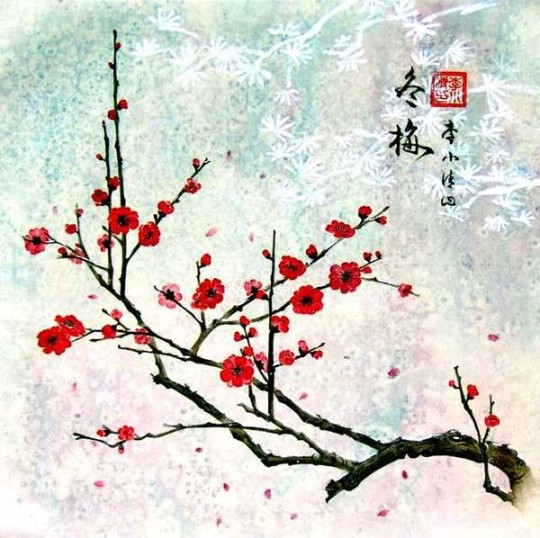
Источник://anashina.com/sliva-meihua/, //russian.news.cn/importnews/2019-02/01/c_137791307_10.htm, //russian.people.com.cn/n3/2017/0130/c31516-9172556-5.html, /chainka.com/blog/simvolika/255-tsvetushchaya-sliva-mejkhua, bogachkova1957.livejournal.com/86338.html, /koryo-saram.site/glavnyj-simvol-nachinayushhejsya-vesny-i-zhizni-czvety-slivy-매화/, /dveimperii.ru/articles/tsvetuschaya-dikaya-sliva.
#China#Xuanen#Nanking#nature#flora#plum#Meihua#flowers photography#flowers#flower aesthetics#bloomcore#painting#Asian Art#Китай#Сюаньэнь#Нанкин#природа#флора#слива#Мейхуа#цветы#живопись
199 notes
·
View notes
Video
Avant-Garde Andy Warhol by Gail Anderson Via Flickr: Postcard with a black and white photo featuring a poster of artist Andy Warhol in a bookstore in Nanking, China. Sent by a Postcrossing member in South Korea to thank me for a postcard I sent her.
0 notes
Text
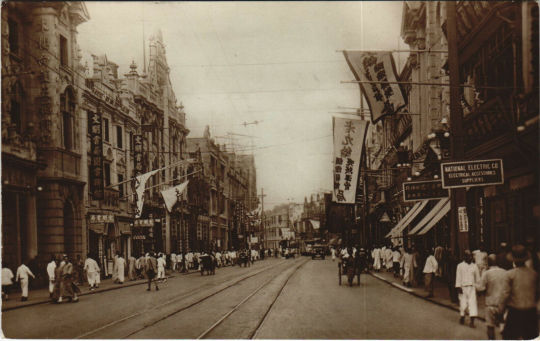
Nanking Road in 1930, Shanghai, China
British vintage postcard
#shanghai#vintage#photography#british#postkarte#carte postale#postal#road#briefkaart#china#nanking#nanking road#postcard#old#photo#ansichtskarte#sepia#1930#postkaart#ephemera#tarjeta#historic
8 notes
·
View notes
Photo

Nanking cherries have a long history of use in food, medicine, and ornamental gardening. They’re a member of the rose family of plants and the same genus as cherries, plums, and apricots. These cold-hardy shrubs produce small, white to pink flowers in the spring. In the summer, dark red edible stone fruits (drupes) appear en masse. They stay on bushes until late in the season, making them some of the earliest and latest fruits you’ll harvest. If you live in the coldest regions of the U.S. and have trouble growing fruit, this remarkably resilient shrub will be a great choice. Let’s dive in to learn how to plant and care for nanking cherry bushes in your area. Nanking Cherry Bush Overview Plant Type Deciduous Shrub Native Area Northeast Asia Watering Requirements Moderate Pests & Diseases Branch cankers, aphids, spider mites, coryneum blight, borers Soil Type Loamy, well-drained soil with a pH between 5.0 to 7.5 What Is It? This hardy fruit tree thrives in cold, harsh climates. In the frigid gardens of Siberia, Mongolia, Tibet, and northern China, few species of fruit trees can survive. Nanking cherries, however, thrive in these frigid zones. This is where some of the planet’s driest and coldest air masses move east. For fruit trees to come from here, they have to be resilient. The first trees arrived in the U.S. in 1882. The horticulture writers of the Yearbook of Agriculture 1937 praised their future in US agriculture. Because of their small and sweet drupes, farmers were interested in their potential as a major fruit crop. Today, few farmers grow nanking cherries, and even fewer market their fruit. The drupes have a short shelf life once they’re harvested. Still, for gardeners who grow them, they’re an exciting fruit that makes incredible jams, pies, juices, and wines. Characteristics Hardy shrubs produce vibrant flowers and edible red drupes. Nanking cherry bushes (Prunus tomentosa) are deciduous shrubs and members of the rose family. They’re part of the Prunus genus which includes popular stone fruits such as cherries, plums, and almonds. They go by several names, including Manchu cherry, mountain cherry, and Mongolian cherry. They’re one of the toughest stone fruits you can grow. They’ll handle droughts, severe cold, wind, and rain with ease. These striking bushes grow to 10 feet high. They produce an abundance of white to pink flowers in the spring, followed by dense green foliage and edible red drupes. The flowers attract beneficial pollinators such as hummingbirds and bees. They make gorgeous alternatives to Yoshino cherry trees for enjoying a ‘hanami’ party at home. Native Area Originating in cold plains, these shrubs thrive in harsh climates. These stunning shrubs originated in the cold plains of northeast Asia. In these semi-arid regions, long winters plunge temperatures below 0°F (-18°C) for months. Nanking cherries adapted to this cold, dry climate by developing a long taproot and downy fuzz on their foliage. People spread them to Japan, Russia, and Korea. They became popular in gardens across the region because of their edible fruit and ornamental flowers. Today, they are grown throughout northern Asia, Russia, Northern Europe, and Canada. Planting Growing from seed or container starters yields fruitful shrubs. These shrubs grow easily from seed. Many gardeners harvest their seeds from the drupes by washing, drying them, and cold-stratifying them for over 100 days. They can grow in large containers, 100-gallon BPA-free grow bags, or directly sown into the ground. You can plant them in the spring after cold stratification or in the fall. Fall-sown seeds will naturally stratify and germinate in the spring. Nanking cherries need cross-pollination to produce fruit. You should plant two within 100 feet of one another for proper fruit set. They’re somewhat hard to find in the US. Some suppliers and nurseries sell bare root plants as well as seeds. Occasionally, you may find starters in containers. Transplanting Ensure two shrubs for fruit production and optimal growth. These shrubs can handle transplanting well. If you’re not in zones 2 through 7, these bushes will have trouble surviving. They can’t handle long periods of hot temperatures and high humidity. Make sure you have two or more shrubs to produce fruit. Find a site with a neutral soil pH and over 6 to 8 hours of direct sunlight. Besides these basic requirements, these flowering shrubs don’t need special care. Transplant them in fall, late winter, or early spring before they start producing foliage. Grow them near other stone fruits if you want to cross-pollinate between species. Growing from Seed Store-bought cold-stratified seeds can be planted in early spring. Order seeds from a reputable source online or at a nursery. Check that they aren’t damaged or chipped. Look at their packing date and avoid planting seeds over a year old. Seeds will need cold stratification to germinate. After harvesting, clean them well and dry them for a few days in a cold, dry spot. Afterward, cold-stratify them outside in the cold or in your refrigerator for 100 days. Keep them in a mixture of vermiculite, sand, and potting mix. Plant your seeds directly into the soil in the fall to cold stratify them. Store-bought seeds that have already gone through cold stratification can go into the ground in early spring. Plant them to a depth of ¾ inches and space them out more than 15 feet if you’re growing them for flowers and fruit. If you’re growing them as hedges, plant them closer together, between 1 to 2 feet. How to Grow Nanking cherries are incredibly easy to grow. Once they germinate, they’re simple to maintain and don’t require much in terms of pruning or fertilization. They have long taproots that let them survive long periods of droughts. The only thing they can’t handle is heat. High temperatures and humidity will stress them over time. Ideally, they need to grow in zones 7 or under. This limits them to high-altitude zones and northern latitudes in the US. Light Ensure 6-8 hours of sunlight for healthy, sweet fruit. Grow these flowering shrubs in areas with over 6 to 8 hours of direct sunlight. They can grow in partial shade but won’t be as productive. Plants growing in full sun will put on plenty of growth and abundant flowers in spring. The more light they get the fuller their blooms. Plants grown in full sun will produce sweeter fruit with high concentrations of sugars and tannins. Water Ensure good drainage to prevent root rot and overwatering. As seedlings and young plants, give them plenty of water without over-saturating their soil. As they grow, they’ll develop their long taproot. Once they mature, they can survive long periods of droughts. Be careful not to overwater your shrubs. They are susceptible to root rot and are not suited to overly moist soils. In desert climates that receive less than 10 inches of rain a year, you may have to water them occasionally. Otherwise, you won’t have to worry about watering mature trees. Soil Amend soil to maintain good drainage and proper pH. These hardy shrubs prefer well-drained, loamy soil with a neutral pH of between 5.0 and 7.5. Use a soil testing kit to see if your soil is within this range. Some soil amendments will raise or lower the soil’s pH if needed. Nanking cherries will adapt to most soil types as long as they drain well. Soggy soils with high amounts of water-retaining clay and organic material are not ideal. Temperature and Humidity They’re best for cold climates and not suited for intense heat. These shrubs are some of the most cold-hardy plants you can grow. They’ll survive in areas with a USDA hardiness zone of 2. These regions include much of Alaska and northern Canada. Temperatures for zone 2 zones can reach below -50°F (-46°C) during the winter. Mature shrubs can handle a little humidity and short periods of afternoon heat. However, long and intense heat will eventually kill them. Gardeners in Florida, Hawaii, California, and the coastal South will not be able to grow them. They’ll thrive in the Great Planes, in places such as the Dakotas, Wyoming, and Utah. You can also grow them in New England and the Midwest as long as the soil is well-draining. Generally, the lower the humidity, the better. Fertilizing Organic compost can give young plants a helpful boost. These plants are experts at surviving in poor soils. They generally perform better away from nutrient-dense soil. Consider feeding young plants with organic compost in spring. Although this isn’t needed, it may help boost the plants’ energy before flowering. Maintenance They thrive with little care, just avoid soggy soil. One of the best things about growing Nanking cherries is their adaptability and low maintenance behavior. Once they’re established, you won’t have to worry about their needs. Monitor their soil for oversaturation. If you see them growing in soggy soil, you may have to relocate them to better-draining locations. While these aren’t invasive plants, they naturalize easily in the landscape. This may require regular thinning to prevent their spread. Propagation It’s easy to propagate these plants by seed and cuttings. They can handle a lot of stress. If you live near other trees, try growing your own trees by collecting seeds or taking cuttings. Cuttings Select flexible stems and root them in sun-filled spots. Find soft and flexible stems from several trees. Because they need cross pollination to flower and fruit, choose cuttings from as many individuals as possible. Select the stems in spring or fall and cut them at 45° angles about 12 inches from the tip. Make sure there are at least four leaf nodes. Take off the leaves near the bottom of the cuttings and dip the cut ends in a rooting hormone. Plant your cuttings up to 2 inches deep in loamy potting soil. Water them well and repeat when the soil gets dry. Place your cuttings in an area that gets plenty of direct sun. Within a couple of months, you’ll be able to plant them outside or in a larger container. Harvesting and Storage Pick at peak ripeness for a delicious, sweet flavor. After your plants bloom in spring, the pollinated flowers will turn into small drupes. They’ll ripen over summer, turning soft and bright to dark red. Once they’re ripe, harvest them immediately or leave them on the tree to develop even more delicious sugars. You’ll have to eat them within a few days or preserve them in jams or in the freezer. Nanking cherries taste similar to tart cherries. The longer you leave them on their branches, the sweeter they’ll be. Besides jams, pies, and juices, they make outstanding wine. You’ll need a lot of cherries, and you’ll have better success if you let them ripen until fall. Common Problems Other than sensitivity to long, hot temperatures and high humidity, these plants are tough as nails. They have very few issues growing in most regions of the northern US. If you have a healthy ecosystem full of natural predators like birds, spiders, and wasps, your trees will likely be pest-free. As always, keep an eye on your plants for diseases, especially after periods of heavy rain and humidity. Pests These hardy shrubs are relatively pest-free. However, they can still be infested by common pests that infest stone fruits. Western Cherry Fruit Fly Inspect fruit for pests and discard any infected ones. This common pest will its eggs in the ripening fruit. You’ll notice white maggots developing inside the fruit. Check your harvest for infestations and throw away infected fruit. You can treat your tree with spinosad if you’ve had issues with these flies before. Spray every week as soon as cherries start to ripen, and do so out of direct sunlight while pollinators are not active. Black Cherry Aphid Use neem oil after rinsing plants with water. Black cherry aphids will sometimes infest the plants’ leaves. You may notice sooty mold growing on the honeydew secretions. Treat large infections with organic neem oil after spraying them with a high-pressure water hose. Again, apply pesticides outside the high activity periods of pollinators and beneficial insects. Spider Mite Treat them with insecticidal soap until they disappear. Spider mites are small insects that feed on the inside of leaves. You’ll notice the very thin webs between leaves and plant tissue in severe infestations. If the infestations are high, try treating them with insecticidal soap once a week until they go away. Shothole Borer These pests of the Prunus genus bore under bark to lay their eggs. The shothole borer is a pest of plants in the Prunus genus and bores into the layers of wood below the bark. Adults then lay eggs in the cambium, causing girdling and eventually death if their numbers are high enough or the tree is weak enough. Prevent their spread by pruning away old and diseased branches, removing garden debris at the end of the season, and monitoring your tree for infestations. There is no pesticide that effectively controls the borer. Diseases Prune infected leaves and dispose of them immediately. Nanking cherries are usually disease free. Monitor your palnts for signs of root rot that can infect the roots of plants growing in soggy soil. There’s no cure for root rot. The only way to prevent it is by growing your shrubs in well-draining soil away from previously infected areas. Coryneum blight is a disease that may infect the leaves. You’ll notice small black or brown spots that eventually turn into large holes. Prune infected plant tissue and dispose of it immediately by burning it. If the infection is severe, try treating it with copper sprays at leaf drop. Frequently Asked Questions Yes, but only at high elevations in the north. Nanking cherries prefer growing in zone 7 and under. These areas include the northeastern corner of the state near the Modoc National Forest and the High Sierras. They taste like tart cherries, with large pits. They’re quite juicy and soft when they’re ripe. Yes, but only in big ones. These shrubs can grow to 10 feet but will stay between 4 and 6 feet tall. They have a long taproot, so your pot has to be deep. There are dwarf varieties that are much more compact. Source link
0 notes
Photo

Nanking cherries have a long history of use in food, medicine, and ornamental gardening. They’re a member of the rose family of plants and the same genus as cherries, plums, and apricots. These cold-hardy shrubs produce small, white to pink flowers in the spring. In the summer, dark red edible stone fruits (drupes) appear en masse. They stay on bushes until late in the season, making them some of the earliest and latest fruits you’ll harvest. If you live in the coldest regions of the U.S. and have trouble growing fruit, this remarkably resilient shrub will be a great choice. Let’s dive in to learn how to plant and care for nanking cherry bushes in your area. Nanking Cherry Bush Overview Plant Type Deciduous Shrub Native Area Northeast Asia Watering Requirements Moderate Pests & Diseases Branch cankers, aphids, spider mites, coryneum blight, borers Soil Type Loamy, well-drained soil with a pH between 5.0 to 7.5 What Is It? This hardy fruit tree thrives in cold, harsh climates. In the frigid gardens of Siberia, Mongolia, Tibet, and northern China, few species of fruit trees can survive. Nanking cherries, however, thrive in these frigid zones. This is where some of the planet’s driest and coldest air masses move east. For fruit trees to come from here, they have to be resilient. The first trees arrived in the U.S. in 1882. The horticulture writers of the Yearbook of Agriculture 1937 praised their future in US agriculture. Because of their small and sweet drupes, farmers were interested in their potential as a major fruit crop. Today, few farmers grow nanking cherries, and even fewer market their fruit. The drupes have a short shelf life once they’re harvested. Still, for gardeners who grow them, they’re an exciting fruit that makes incredible jams, pies, juices, and wines. Characteristics Hardy shrubs produce vibrant flowers and edible red drupes. Nanking cherry bushes (Prunus tomentosa) are deciduous shrubs and members of the rose family. They’re part of the Prunus genus which includes popular stone fruits such as cherries, plums, and almonds. They go by several names, including Manchu cherry, mountain cherry, and Mongolian cherry. They’re one of the toughest stone fruits you can grow. They’ll handle droughts, severe cold, wind, and rain with ease. These striking bushes grow to 10 feet high. They produce an abundance of white to pink flowers in the spring, followed by dense green foliage and edible red drupes. The flowers attract beneficial pollinators such as hummingbirds and bees. They make gorgeous alternatives to Yoshino cherry trees for enjoying a ‘hanami’ party at home. Native Area Originating in cold plains, these shrubs thrive in harsh climates. These stunning shrubs originated in the cold plains of northeast Asia. In these semi-arid regions, long winters plunge temperatures below 0°F (-18°C) for months. Nanking cherries adapted to this cold, dry climate by developing a long taproot and downy fuzz on their foliage. People spread them to Japan, Russia, and Korea. They became popular in gardens across the region because of their edible fruit and ornamental flowers. Today, they are grown throughout northern Asia, Russia, Northern Europe, and Canada. Planting Growing from seed or container starters yields fruitful shrubs. These shrubs grow easily from seed. Many gardeners harvest their seeds from the drupes by washing, drying them, and cold-stratifying them for over 100 days. They can grow in large containers, 100-gallon BPA-free grow bags, or directly sown into the ground. You can plant them in the spring after cold stratification or in the fall. Fall-sown seeds will naturally stratify and germinate in the spring. Nanking cherries need cross-pollination to produce fruit. You should plant two within 100 feet of one another for proper fruit set. They’re somewhat hard to find in the US. Some suppliers and nurseries sell bare root plants as well as seeds. Occasionally, you may find starters in containers. Transplanting Ensure two shrubs for fruit production and optimal growth. These shrubs can handle transplanting well. If you’re not in zones 2 through 7, these bushes will have trouble surviving. They can’t handle long periods of hot temperatures and high humidity. Make sure you have two or more shrubs to produce fruit. Find a site with a neutral soil pH and over 6 to 8 hours of direct sunlight. Besides these basic requirements, these flowering shrubs don’t need special care. Transplant them in fall, late winter, or early spring before they start producing foliage. Grow them near other stone fruits if you want to cross-pollinate between species. Growing from Seed Store-bought cold-stratified seeds can be planted in early spring. Order seeds from a reputable source online or at a nursery. Check that they aren’t damaged or chipped. Look at their packing date and avoid planting seeds over a year old. Seeds will need cold stratification to germinate. After harvesting, clean them well and dry them for a few days in a cold, dry spot. Afterward, cold-stratify them outside in the cold or in your refrigerator for 100 days. Keep them in a mixture of vermiculite, sand, and potting mix. Plant your seeds directly into the soil in the fall to cold stratify them. Store-bought seeds that have already gone through cold stratification can go into the ground in early spring. Plant them to a depth of ¾ inches and space them out more than 15 feet if you’re growing them for flowers and fruit. If you’re growing them as hedges, plant them closer together, between 1 to 2 feet. How to Grow Nanking cherries are incredibly easy to grow. Once they germinate, they’re simple to maintain and don’t require much in terms of pruning or fertilization. They have long taproots that let them survive long periods of droughts. The only thing they can’t handle is heat. High temperatures and humidity will stress them over time. Ideally, they need to grow in zones 7 or under. This limits them to high-altitude zones and northern latitudes in the US. Light Ensure 6-8 hours of sunlight for healthy, sweet fruit. Grow these flowering shrubs in areas with over 6 to 8 hours of direct sunlight. They can grow in partial shade but won’t be as productive. Plants growing in full sun will put on plenty of growth and abundant flowers in spring. The more light they get the fuller their blooms. Plants grown in full sun will produce sweeter fruit with high concentrations of sugars and tannins. Water Ensure good drainage to prevent root rot and overwatering. As seedlings and young plants, give them plenty of water without over-saturating their soil. As they grow, they’ll develop their long taproot. Once they mature, they can survive long periods of droughts. Be careful not to overwater your shrubs. They are susceptible to root rot and are not suited to overly moist soils. In desert climates that receive less than 10 inches of rain a year, you may have to water them occasionally. Otherwise, you won’t have to worry about watering mature trees. Soil Amend soil to maintain good drainage and proper pH. These hardy shrubs prefer well-drained, loamy soil with a neutral pH of between 5.0 and 7.5. Use a soil testing kit to see if your soil is within this range. Some soil amendments will raise or lower the soil’s pH if needed. Nanking cherries will adapt to most soil types as long as they drain well. Soggy soils with high amounts of water-retaining clay and organic material are not ideal. Temperature and Humidity They’re best for cold climates and not suited for intense heat. These shrubs are some of the most cold-hardy plants you can grow. They’ll survive in areas with a USDA hardiness zone of 2. These regions include much of Alaska and northern Canada. Temperatures for zone 2 zones can reach below -50°F (-46°C) during the winter. Mature shrubs can handle a little humidity and short periods of afternoon heat. However, long and intense heat will eventually kill them. Gardeners in Florida, Hawaii, California, and the coastal South will not be able to grow them. They’ll thrive in the Great Planes, in places such as the Dakotas, Wyoming, and Utah. You can also grow them in New England and the Midwest as long as the soil is well-draining. Generally, the lower the humidity, the better. Fertilizing Organic compost can give young plants a helpful boost. These plants are experts at surviving in poor soils. They generally perform better away from nutrient-dense soil. Consider feeding young plants with organic compost in spring. Although this isn’t needed, it may help boost the plants’ energy before flowering. Maintenance They thrive with little care, just avoid soggy soil. One of the best things about growing Nanking cherries is their adaptability and low maintenance behavior. Once they’re established, you won’t have to worry about their needs. Monitor their soil for oversaturation. If you see them growing in soggy soil, you may have to relocate them to better-draining locations. While these aren’t invasive plants, they naturalize easily in the landscape. This may require regular thinning to prevent their spread. Propagation It’s easy to propagate these plants by seed and cuttings. They can handle a lot of stress. If you live near other trees, try growing your own trees by collecting seeds or taking cuttings. Cuttings Select flexible stems and root them in sun-filled spots. Find soft and flexible stems from several trees. Because they need cross pollination to flower and fruit, choose cuttings from as many individuals as possible. Select the stems in spring or fall and cut them at 45° angles about 12 inches from the tip. Make sure there are at least four leaf nodes. Take off the leaves near the bottom of the cuttings and dip the cut ends in a rooting hormone. Plant your cuttings up to 2 inches deep in loamy potting soil. Water them well and repeat when the soil gets dry. Place your cuttings in an area that gets plenty of direct sun. Within a couple of months, you’ll be able to plant them outside or in a larger container. Harvesting and Storage Pick at peak ripeness for a delicious, sweet flavor. After your plants bloom in spring, the pollinated flowers will turn into small drupes. They’ll ripen over summer, turning soft and bright to dark red. Once they’re ripe, harvest them immediately or leave them on the tree to develop even more delicious sugars. You’ll have to eat them within a few days or preserve them in jams or in the freezer. Nanking cherries taste similar to tart cherries. The longer you leave them on their branches, the sweeter they’ll be. Besides jams, pies, and juices, they make outstanding wine. You’ll need a lot of cherries, and you’ll have better success if you let them ripen until fall. Common Problems Other than sensitivity to long, hot temperatures and high humidity, these plants are tough as nails. They have very few issues growing in most regions of the northern US. If you have a healthy ecosystem full of natural predators like birds, spiders, and wasps, your trees will likely be pest-free. As always, keep an eye on your plants for diseases, especially after periods of heavy rain and humidity. Pests These hardy shrubs are relatively pest-free. However, they can still be infested by common pests that infest stone fruits. Western Cherry Fruit Fly Inspect fruit for pests and discard any infected ones. This common pest will its eggs in the ripening fruit. You’ll notice white maggots developing inside the fruit. Check your harvest for infestations and throw away infected fruit. You can treat your tree with spinosad if you’ve had issues with these flies before. Spray every week as soon as cherries start to ripen, and do so out of direct sunlight while pollinators are not active. Black Cherry Aphid Use neem oil after rinsing plants with water. Black cherry aphids will sometimes infest the plants’ leaves. You may notice sooty mold growing on the honeydew secretions. Treat large infections with organic neem oil after spraying them with a high-pressure water hose. Again, apply pesticides outside the high activity periods of pollinators and beneficial insects. Spider Mite Treat them with insecticidal soap until they disappear. Spider mites are small insects that feed on the inside of leaves. You’ll notice the very thin webs between leaves and plant tissue in severe infestations. If the infestations are high, try treating them with insecticidal soap once a week until they go away. Shothole Borer These pests of the Prunus genus bore under bark to lay their eggs. The shothole borer is a pest of plants in the Prunus genus and bores into the layers of wood below the bark. Adults then lay eggs in the cambium, causing girdling and eventually death if their numbers are high enough or the tree is weak enough. Prevent their spread by pruning away old and diseased branches, removing garden debris at the end of the season, and monitoring your tree for infestations. There is no pesticide that effectively controls the borer. Diseases Prune infected leaves and dispose of them immediately. Nanking cherries are usually disease free. Monitor your palnts for signs of root rot that can infect the roots of plants growing in soggy soil. There’s no cure for root rot. The only way to prevent it is by growing your shrubs in well-draining soil away from previously infected areas. Coryneum blight is a disease that may infect the leaves. You’ll notice small black or brown spots that eventually turn into large holes. Prune infected plant tissue and dispose of it immediately by burning it. If the infection is severe, try treating it with copper sprays at leaf drop. Frequently Asked Questions Yes, but only at high elevations in the north. Nanking cherries prefer growing in zone 7 and under. These areas include the northeastern corner of the state near the Modoc National Forest and the High Sierras. They taste like tart cherries, with large pits. They’re quite juicy and soft when they’re ripe. Yes, but only in big ones. These shrubs can grow to 10 feet but will stay between 4 and 6 feet tall. They have a long taproot, so your pot has to be deep. There are dwarf varieties that are much more compact. Source link
0 notes
Photo

Nanking cherries have a long history of use in food, medicine, and ornamental gardening. They’re a member of the rose family of plants and the same genus as cherries, plums, and apricots. These cold-hardy shrubs produce small, white to pink flowers in the spring. In the summer, dark red edible stone fruits (drupes) appear en masse. They stay on bushes until late in the season, making them some of the earliest and latest fruits you’ll harvest. If you live in the coldest regions of the U.S. and have trouble growing fruit, this remarkably resilient shrub will be a great choice. Let’s dive in to learn how to plant and care for nanking cherry bushes in your area. Nanking Cherry Bush Overview Plant Type Deciduous Shrub Native Area Northeast Asia Watering Requirements Moderate Pests & Diseases Branch cankers, aphids, spider mites, coryneum blight, borers Soil Type Loamy, well-drained soil with a pH between 5.0 to 7.5 What Is It? This hardy fruit tree thrives in cold, harsh climates. In the frigid gardens of Siberia, Mongolia, Tibet, and northern China, few species of fruit trees can survive. Nanking cherries, however, thrive in these frigid zones. This is where some of the planet’s driest and coldest air masses move east. For fruit trees to come from here, they have to be resilient. The first trees arrived in the U.S. in 1882. The horticulture writers of the Yearbook of Agriculture 1937 praised their future in US agriculture. Because of their small and sweet drupes, farmers were interested in their potential as a major fruit crop. Today, few farmers grow nanking cherries, and even fewer market their fruit. The drupes have a short shelf life once they’re harvested. Still, for gardeners who grow them, they’re an exciting fruit that makes incredible jams, pies, juices, and wines. Characteristics Hardy shrubs produce vibrant flowers and edible red drupes. Nanking cherry bushes (Prunus tomentosa) are deciduous shrubs and members of the rose family. They’re part of the Prunus genus which includes popular stone fruits such as cherries, plums, and almonds. They go by several names, including Manchu cherry, mountain cherry, and Mongolian cherry. They’re one of the toughest stone fruits you can grow. They’ll handle droughts, severe cold, wind, and rain with ease. These striking bushes grow to 10 feet high. They produce an abundance of white to pink flowers in the spring, followed by dense green foliage and edible red drupes. The flowers attract beneficial pollinators such as hummingbirds and bees. They make gorgeous alternatives to Yoshino cherry trees for enjoying a ‘hanami’ party at home. Native Area Originating in cold plains, these shrubs thrive in harsh climates. These stunning shrubs originated in the cold plains of northeast Asia. In these semi-arid regions, long winters plunge temperatures below 0°F (-18°C) for months. Nanking cherries adapted to this cold, dry climate by developing a long taproot and downy fuzz on their foliage. People spread them to Japan, Russia, and Korea. They became popular in gardens across the region because of their edible fruit and ornamental flowers. Today, they are grown throughout northern Asia, Russia, Northern Europe, and Canada. Planting Growing from seed or container starters yields fruitful shrubs. These shrubs grow easily from seed. Many gardeners harvest their seeds from the drupes by washing, drying them, and cold-stratifying them for over 100 days. They can grow in large containers, 100-gallon BPA-free grow bags, or directly sown into the ground. You can plant them in the spring after cold stratification or in the fall. Fall-sown seeds will naturally stratify and germinate in the spring. Nanking cherries need cross-pollination to produce fruit. You should plant two within 100 feet of one another for proper fruit set. They’re somewhat hard to find in the US. Some suppliers and nurseries sell bare root plants as well as seeds. Occasionally, you may find starters in containers. Transplanting Ensure two shrubs for fruit production and optimal growth. These shrubs can handle transplanting well. If you’re not in zones 2 through 7, these bushes will have trouble surviving. They can’t handle long periods of hot temperatures and high humidity. Make sure you have two or more shrubs to produce fruit. Find a site with a neutral soil pH and over 6 to 8 hours of direct sunlight. Besides these basic requirements, these flowering shrubs don’t need special care. Transplant them in fall, late winter, or early spring before they start producing foliage. Grow them near other stone fruits if you want to cross-pollinate between species. Growing from Seed Store-bought cold-stratified seeds can be planted in early spring. Order seeds from a reputable source online or at a nursery. Check that they aren’t damaged or chipped. Look at their packing date and avoid planting seeds over a year old. Seeds will need cold stratification to germinate. After harvesting, clean them well and dry them for a few days in a cold, dry spot. Afterward, cold-stratify them outside in the cold or in your refrigerator for 100 days. Keep them in a mixture of vermiculite, sand, and potting mix. Plant your seeds directly into the soil in the fall to cold stratify them. Store-bought seeds that have already gone through cold stratification can go into the ground in early spring. Plant them to a depth of ¾ inches and space them out more than 15 feet if you’re growing them for flowers and fruit. If you’re growing them as hedges, plant them closer together, between 1 to 2 feet. How to Grow Nanking cherries are incredibly easy to grow. Once they germinate, they’re simple to maintain and don’t require much in terms of pruning or fertilization. They have long taproots that let them survive long periods of droughts. The only thing they can’t handle is heat. High temperatures and humidity will stress them over time. Ideally, they need to grow in zones 7 or under. This limits them to high-altitude zones and northern latitudes in the US. Light Ensure 6-8 hours of sunlight for healthy, sweet fruit. Grow these flowering shrubs in areas with over 6 to 8 hours of direct sunlight. They can grow in partial shade but won’t be as productive. Plants growing in full sun will put on plenty of growth and abundant flowers in spring. The more light they get the fuller their blooms. Plants grown in full sun will produce sweeter fruit with high concentrations of sugars and tannins. Water Ensure good drainage to prevent root rot and overwatering. As seedlings and young plants, give them plenty of water without over-saturating their soil. As they grow, they’ll develop their long taproot. Once they mature, they can survive long periods of droughts. Be careful not to overwater your shrubs. They are susceptible to root rot and are not suited to overly moist soils. In desert climates that receive less than 10 inches of rain a year, you may have to water them occasionally. Otherwise, you won’t have to worry about watering mature trees. Soil Amend soil to maintain good drainage and proper pH. These hardy shrubs prefer well-drained, loamy soil with a neutral pH of between 5.0 and 7.5. Use a soil testing kit to see if your soil is within this range. Some soil amendments will raise or lower the soil’s pH if needed. Nanking cherries will adapt to most soil types as long as they drain well. Soggy soils with high amounts of water-retaining clay and organic material are not ideal. Temperature and Humidity They’re best for cold climates and not suited for intense heat. These shrubs are some of the most cold-hardy plants you can grow. They’ll survive in areas with a USDA hardiness zone of 2. These regions include much of Alaska and northern Canada. Temperatures for zone 2 zones can reach below -50°F (-46°C) during the winter. Mature shrubs can handle a little humidity and short periods of afternoon heat. However, long and intense heat will eventually kill them. Gardeners in Florida, Hawaii, California, and the coastal South will not be able to grow them. They’ll thrive in the Great Planes, in places such as the Dakotas, Wyoming, and Utah. You can also grow them in New England and the Midwest as long as the soil is well-draining. Generally, the lower the humidity, the better. Fertilizing Organic compost can give young plants a helpful boost. These plants are experts at surviving in poor soils. They generally perform better away from nutrient-dense soil. Consider feeding young plants with organic compost in spring. Although this isn’t needed, it may help boost the plants’ energy before flowering. Maintenance They thrive with little care, just avoid soggy soil. One of the best things about growing Nanking cherries is their adaptability and low maintenance behavior. Once they’re established, you won’t have to worry about their needs. Monitor their soil for oversaturation. If you see them growing in soggy soil, you may have to relocate them to better-draining locations. While these aren’t invasive plants, they naturalize easily in the landscape. This may require regular thinning to prevent their spread. Propagation It’s easy to propagate these plants by seed and cuttings. They can handle a lot of stress. If you live near other trees, try growing your own trees by collecting seeds or taking cuttings. Cuttings Select flexible stems and root them in sun-filled spots. Find soft and flexible stems from several trees. Because they need cross pollination to flower and fruit, choose cuttings from as many individuals as possible. Select the stems in spring or fall and cut them at 45° angles about 12 inches from the tip. Make sure there are at least four leaf nodes. Take off the leaves near the bottom of the cuttings and dip the cut ends in a rooting hormone. Plant your cuttings up to 2 inches deep in loamy potting soil. Water them well and repeat when the soil gets dry. Place your cuttings in an area that gets plenty of direct sun. Within a couple of months, you’ll be able to plant them outside or in a larger container. Harvesting and Storage Pick at peak ripeness for a delicious, sweet flavor. After your plants bloom in spring, the pollinated flowers will turn into small drupes. They’ll ripen over summer, turning soft and bright to dark red. Once they’re ripe, harvest them immediately or leave them on the tree to develop even more delicious sugars. You’ll have to eat them within a few days or preserve them in jams or in the freezer. Nanking cherries taste similar to tart cherries. The longer you leave them on their branches, the sweeter they’ll be. Besides jams, pies, and juices, they make outstanding wine. You’ll need a lot of cherries, and you’ll have better success if you let them ripen until fall. Common Problems Other than sensitivity to long, hot temperatures and high humidity, these plants are tough as nails. They have very few issues growing in most regions of the northern US. If you have a healthy ecosystem full of natural predators like birds, spiders, and wasps, your trees will likely be pest-free. As always, keep an eye on your plants for diseases, especially after periods of heavy rain and humidity. Pests These hardy shrubs are relatively pest-free. However, they can still be infested by common pests that infest stone fruits. Western Cherry Fruit Fly Inspect fruit for pests and discard any infected ones. This common pest will its eggs in the ripening fruit. You’ll notice white maggots developing inside the fruit. Check your harvest for infestations and throw away infected fruit. You can treat your tree with spinosad if you’ve had issues with these flies before. Spray every week as soon as cherries start to ripen, and do so out of direct sunlight while pollinators are not active. Black Cherry Aphid Use neem oil after rinsing plants with water. Black cherry aphids will sometimes infest the plants’ leaves. You may notice sooty mold growing on the honeydew secretions. Treat large infections with organic neem oil after spraying them with a high-pressure water hose. Again, apply pesticides outside the high activity periods of pollinators and beneficial insects. Spider Mite Treat them with insecticidal soap until they disappear. Spider mites are small insects that feed on the inside of leaves. You’ll notice the very thin webs between leaves and plant tissue in severe infestations. If the infestations are high, try treating them with insecticidal soap once a week until they go away. Shothole Borer These pests of the Prunus genus bore under bark to lay their eggs. The shothole borer is a pest of plants in the Prunus genus and bores into the layers of wood below the bark. Adults then lay eggs in the cambium, causing girdling and eventually death if their numbers are high enough or the tree is weak enough. Prevent their spread by pruning away old and diseased branches, removing garden debris at the end of the season, and monitoring your tree for infestations. There is no pesticide that effectively controls the borer. Diseases Prune infected leaves and dispose of them immediately. Nanking cherries are usually disease free. Monitor your palnts for signs of root rot that can infect the roots of plants growing in soggy soil. There’s no cure for root rot. The only way to prevent it is by growing your shrubs in well-draining soil away from previously infected areas. Coryneum blight is a disease that may infect the leaves. You’ll notice small black or brown spots that eventually turn into large holes. Prune infected plant tissue and dispose of it immediately by burning it. If the infection is severe, try treating it with copper sprays at leaf drop. Frequently Asked Questions Yes, but only at high elevations in the north. Nanking cherries prefer growing in zone 7 and under. These areas include the northeastern corner of the state near the Modoc National Forest and the High Sierras. They taste like tart cherries, with large pits. They’re quite juicy and soft when they’re ripe. Yes, but only in big ones. These shrubs can grow to 10 feet but will stay between 4 and 6 feet tall. They have a long taproot, so your pot has to be deep. There are dwarf varieties that are much more compact. Source link
0 notes
Photo

Nanking cherries have a long history of use in food, medicine, and ornamental gardening. They’re a member of the rose family of plants and the same genus as cherries, plums, and apricots. These cold-hardy shrubs produce small, white to pink flowers in the spring. In the summer, dark red edible stone fruits (drupes) appear en masse. They stay on bushes until late in the season, making them some of the earliest and latest fruits you’ll harvest. If you live in the coldest regions of the U.S. and have trouble growing fruit, this remarkably resilient shrub will be a great choice. Let’s dive in to learn how to plant and care for nanking cherry bushes in your area. Nanking Cherry Bush Overview Plant Type Deciduous Shrub Native Area Northeast Asia Watering Requirements Moderate Pests & Diseases Branch cankers, aphids, spider mites, coryneum blight, borers Soil Type Loamy, well-drained soil with a pH between 5.0 to 7.5 What Is It? This hardy fruit tree thrives in cold, harsh climates. In the frigid gardens of Siberia, Mongolia, Tibet, and northern China, few species of fruit trees can survive. Nanking cherries, however, thrive in these frigid zones. This is where some of the planet’s driest and coldest air masses move east. For fruit trees to come from here, they have to be resilient. The first trees arrived in the U.S. in 1882. The horticulture writers of the Yearbook of Agriculture 1937 praised their future in US agriculture. Because of their small and sweet drupes, farmers were interested in their potential as a major fruit crop. Today, few farmers grow nanking cherries, and even fewer market their fruit. The drupes have a short shelf life once they’re harvested. Still, for gardeners who grow them, they’re an exciting fruit that makes incredible jams, pies, juices, and wines. Characteristics Hardy shrubs produce vibrant flowers and edible red drupes. Nanking cherry bushes (Prunus tomentosa) are deciduous shrubs and members of the rose family. They’re part of the Prunus genus which includes popular stone fruits such as cherries, plums, and almonds. They go by several names, including Manchu cherry, mountain cherry, and Mongolian cherry. They’re one of the toughest stone fruits you can grow. They’ll handle droughts, severe cold, wind, and rain with ease. These striking bushes grow to 10 feet high. They produce an abundance of white to pink flowers in the spring, followed by dense green foliage and edible red drupes. The flowers attract beneficial pollinators such as hummingbirds and bees. They make gorgeous alternatives to Yoshino cherry trees for enjoying a ‘hanami’ party at home. Native Area Originating in cold plains, these shrubs thrive in harsh climates. These stunning shrubs originated in the cold plains of northeast Asia. In these semi-arid regions, long winters plunge temperatures below 0°F (-18°C) for months. Nanking cherries adapted to this cold, dry climate by developing a long taproot and downy fuzz on their foliage. People spread them to Japan, Russia, and Korea. They became popular in gardens across the region because of their edible fruit and ornamental flowers. Today, they are grown throughout northern Asia, Russia, Northern Europe, and Canada. Planting Growing from seed or container starters yields fruitful shrubs. These shrubs grow easily from seed. Many gardeners harvest their seeds from the drupes by washing, drying them, and cold-stratifying them for over 100 days. They can grow in large containers, 100-gallon BPA-free grow bags, or directly sown into the ground. You can plant them in the spring after cold stratification or in the fall. Fall-sown seeds will naturally stratify and germinate in the spring. Nanking cherries need cross-pollination to produce fruit. You should plant two within 100 feet of one another for proper fruit set. They’re somewhat hard to find in the US. Some suppliers and nurseries sell bare root plants as well as seeds. Occasionally, you may find starters in containers. Transplanting Ensure two shrubs for fruit production and optimal growth. These shrubs can handle transplanting well. If you’re not in zones 2 through 7, these bushes will have trouble surviving. They can’t handle long periods of hot temperatures and high humidity. Make sure you have two or more shrubs to produce fruit. Find a site with a neutral soil pH and over 6 to 8 hours of direct sunlight. Besides these basic requirements, these flowering shrubs don’t need special care. Transplant them in fall, late winter, or early spring before they start producing foliage. Grow them near other stone fruits if you want to cross-pollinate between species. Growing from Seed Store-bought cold-stratified seeds can be planted in early spring. Order seeds from a reputable source online or at a nursery. Check that they aren’t damaged or chipped. Look at their packing date and avoid planting seeds over a year old. Seeds will need cold stratification to germinate. After harvesting, clean them well and dry them for a few days in a cold, dry spot. Afterward, cold-stratify them outside in the cold or in your refrigerator for 100 days. Keep them in a mixture of vermiculite, sand, and potting mix. Plant your seeds directly into the soil in the fall to cold stratify them. Store-bought seeds that have already gone through cold stratification can go into the ground in early spring. Plant them to a depth of ¾ inches and space them out more than 15 feet if you’re growing them for flowers and fruit. If you’re growing them as hedges, plant them closer together, between 1 to 2 feet. How to Grow Nanking cherries are incredibly easy to grow. Once they germinate, they’re simple to maintain and don’t require much in terms of pruning or fertilization. They have long taproots that let them survive long periods of droughts. The only thing they can’t handle is heat. High temperatures and humidity will stress them over time. Ideally, they need to grow in zones 7 or under. This limits them to high-altitude zones and northern latitudes in the US. Light Ensure 6-8 hours of sunlight for healthy, sweet fruit. Grow these flowering shrubs in areas with over 6 to 8 hours of direct sunlight. They can grow in partial shade but won’t be as productive. Plants growing in full sun will put on plenty of growth and abundant flowers in spring. The more light they get the fuller their blooms. Plants grown in full sun will produce sweeter fruit with high concentrations of sugars and tannins. Water Ensure good drainage to prevent root rot and overwatering. As seedlings and young plants, give them plenty of water without over-saturating their soil. As they grow, they’ll develop their long taproot. Once they mature, they can survive long periods of droughts. Be careful not to overwater your shrubs. They are susceptible to root rot and are not suited to overly moist soils. In desert climates that receive less than 10 inches of rain a year, you may have to water them occasionally. Otherwise, you won’t have to worry about watering mature trees. Soil Amend soil to maintain good drainage and proper pH. These hardy shrubs prefer well-drained, loamy soil with a neutral pH of between 5.0 and 7.5. Use a soil testing kit to see if your soil is within this range. Some soil amendments will raise or lower the soil’s pH if needed. Nanking cherries will adapt to most soil types as long as they drain well. Soggy soils with high amounts of water-retaining clay and organic material are not ideal. Temperature and Humidity They’re best for cold climates and not suited for intense heat. These shrubs are some of the most cold-hardy plants you can grow. They’ll survive in areas with a USDA hardiness zone of 2. These regions include much of Alaska and northern Canada. Temperatures for zone 2 zones can reach below -50°F (-46°C) during the winter. Mature shrubs can handle a little humidity and short periods of afternoon heat. However, long and intense heat will eventually kill them. Gardeners in Florida, Hawaii, California, and the coastal South will not be able to grow them. They’ll thrive in the Great Planes, in places such as the Dakotas, Wyoming, and Utah. You can also grow them in New England and the Midwest as long as the soil is well-draining. Generally, the lower the humidity, the better. Fertilizing Organic compost can give young plants a helpful boost. These plants are experts at surviving in poor soils. They generally perform better away from nutrient-dense soil. Consider feeding young plants with organic compost in spring. Although this isn’t needed, it may help boost the plants’ energy before flowering. Maintenance They thrive with little care, just avoid soggy soil. One of the best things about growing Nanking cherries is their adaptability and low maintenance behavior. Once they’re established, you won’t have to worry about their needs. Monitor their soil for oversaturation. If you see them growing in soggy soil, you may have to relocate them to better-draining locations. While these aren’t invasive plants, they naturalize easily in the landscape. This may require regular thinning to prevent their spread. Propagation It’s easy to propagate these plants by seed and cuttings. They can handle a lot of stress. If you live near other trees, try growing your own trees by collecting seeds or taking cuttings. Cuttings Select flexible stems and root them in sun-filled spots. Find soft and flexible stems from several trees. Because they need cross pollination to flower and fruit, choose cuttings from as many individuals as possible. Select the stems in spring or fall and cut them at 45° angles about 12 inches from the tip. Make sure there are at least four leaf nodes. Take off the leaves near the bottom of the cuttings and dip the cut ends in a rooting hormone. Plant your cuttings up to 2 inches deep in loamy potting soil. Water them well and repeat when the soil gets dry. Place your cuttings in an area that gets plenty of direct sun. Within a couple of months, you’ll be able to plant them outside or in a larger container. Harvesting and Storage Pick at peak ripeness for a delicious, sweet flavor. After your plants bloom in spring, the pollinated flowers will turn into small drupes. They’ll ripen over summer, turning soft and bright to dark red. Once they’re ripe, harvest them immediately or leave them on the tree to develop even more delicious sugars. You’ll have to eat them within a few days or preserve them in jams or in the freezer. Nanking cherries taste similar to tart cherries. The longer you leave them on their branches, the sweeter they’ll be. Besides jams, pies, and juices, they make outstanding wine. You’ll need a lot of cherries, and you’ll have better success if you let them ripen until fall. Common Problems Other than sensitivity to long, hot temperatures and high humidity, these plants are tough as nails. They have very few issues growing in most regions of the northern US. If you have a healthy ecosystem full of natural predators like birds, spiders, and wasps, your trees will likely be pest-free. As always, keep an eye on your plants for diseases, especially after periods of heavy rain and humidity. Pests These hardy shrubs are relatively pest-free. However, they can still be infested by common pests that infest stone fruits. Western Cherry Fruit Fly Inspect fruit for pests and discard any infected ones. This common pest will its eggs in the ripening fruit. You’ll notice white maggots developing inside the fruit. Check your harvest for infestations and throw away infected fruit. You can treat your tree with spinosad if you’ve had issues with these flies before. Spray every week as soon as cherries start to ripen, and do so out of direct sunlight while pollinators are not active. Black Cherry Aphid Use neem oil after rinsing plants with water. Black cherry aphids will sometimes infest the plants’ leaves. You may notice sooty mold growing on the honeydew secretions. Treat large infections with organic neem oil after spraying them with a high-pressure water hose. Again, apply pesticides outside the high activity periods of pollinators and beneficial insects. Spider Mite Treat them with insecticidal soap until they disappear. Spider mites are small insects that feed on the inside of leaves. You’ll notice the very thin webs between leaves and plant tissue in severe infestations. If the infestations are high, try treating them with insecticidal soap once a week until they go away. Shothole Borer These pests of the Prunus genus bore under bark to lay their eggs. The shothole borer is a pest of plants in the Prunus genus and bores into the layers of wood below the bark. Adults then lay eggs in the cambium, causing girdling and eventually death if their numbers are high enough or the tree is weak enough. Prevent their spread by pruning away old and diseased branches, removing garden debris at the end of the season, and monitoring your tree for infestations. There is no pesticide that effectively controls the borer. Diseases Prune infected leaves and dispose of them immediately. Nanking cherries are usually disease free. Monitor your palnts for signs of root rot that can infect the roots of plants growing in soggy soil. There’s no cure for root rot. The only way to prevent it is by growing your shrubs in well-draining soil away from previously infected areas. Coryneum blight is a disease that may infect the leaves. You’ll notice small black or brown spots that eventually turn into large holes. Prune infected plant tissue and dispose of it immediately by burning it. If the infection is severe, try treating it with copper sprays at leaf drop. Frequently Asked Questions Yes, but only at high elevations in the north. Nanking cherries prefer growing in zone 7 and under. These areas include the northeastern corner of the state near the Modoc National Forest and the High Sierras. They taste like tart cherries, with large pits. They’re quite juicy and soft when they’re ripe. Yes, but only in big ones. These shrubs can grow to 10 feet but will stay between 4 and 6 feet tall. They have a long taproot, so your pot has to be deep. There are dwarf varieties that are much more compact. Source link
0 notes
